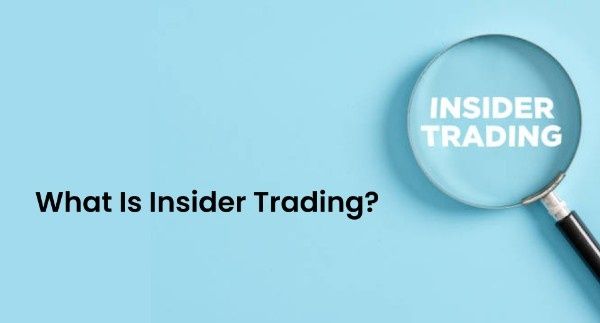Beginning a trading business may be a daunting task, particularly for someone who has never dealt with commerce, import-export, or financial trading. Nonetheless, with pertinent information, you may evolve from a novice to a confident trader who can establish a profitable business. Commodities, financial instruments, or international trade, your efforts will be in the right direction if you pursue education, planning, implementation, and then growth.
In this piece, you will notice, in a more comprehensive way, how to start trading business and develop it from a concept to a thriving enterprise.
Step 1: Learn the Basics of Trading
You need to know the meaning of trading and the various forms it takes. Trading encompasses the buying and selling of items, services, or financial assets and is conducted for the purpose of making a profit. The different forms include:
Financial Trading:
Equities, cryptocurrencies, and any other tradable securities, forex, and bonds.
Import-Export Trading:
Buying products from one country and selling them in another.
Wholesale Trading:
Purchasing products in bulk and selling them at a retail price.
The rules defining each kind of trading business, as well as their risk and profit potential, vary from one type to another. First, define your niche. Do you want to engage in financial trading online, or do you want to get into the import-export trading business and link global markets?
Step 2: Investigate the Market
No trading business can thrive without understanding the market. Research the following:
Target Market:
Who are your potential customers? Are they retail investors, local customers, or international importers?
Competition:
Which firms already operate in your niche, and what are their strengths and weaknesses?
Trends and Demand:
Are the products or financial assets you are trading appreciated and in demand?
For instance, if you’re starting an import-export trading business, you need to find out how to start trading business and what products are in demand in certain countries. If you are doing financial trading, examine trading volumes, market volatility, and patterns of investor behavior.
Step 3: Develop a Comprehensive Business Plan
The development of a business plan is a fundamental pre-step for any successful enterprise. It serves to guide you and also to convince potential investors, financial institutions, and partners that your idea merits their support.
Your business plan should contain:
Business Concept:
Specify the type of trading you will engage in, and Market Analysis – Document your findings regarding the customers and competitors.
Business Model:
Describe the mechanisms that will allow you to generate revenue through the business (e.g., commissions, margins, or price spreads).
Marketing Strategy:
Define the methods to communicate and deliver your service to your customers.
Financial Plan:
Evaluate and predict the costs that will be needed to set the business, required for working capital, and the expected profit margins.
In terms of the fully developed plan, these steps are what you will be following to achieve the desired “zero to hero” plan.
Step 4: Ensure Compliance with legal and Regulatory criteria
Most professionals working in the trading sector, especially international market or financial trading-operating professionals, face stringent trading regulations.
Register your business:
Select an organizational type (sole proprietorship, partnership, LLC, or corporation).
Obtain Licenses and Permits:
Import-export business traders might need customs permits, financial traders operate with broker licenses, and other permits may be required.
Tax Compliance:
Knowledge of local and international legal trading tax laws is essential.
Contracts and Documentations:
Supplier, client, or broker agreements need to be in place in legal form.
Penalties, business fines, or even closure can all result from negligence of this section. This is where the value of a business lawyer or a consultant is extremely important.
Step 5: Capital and Funding
There is no question that all trade involves capital, whether it be little or plenty. This capital is needed to acquire goods, gain inventory, and/or open trade accounts, especially in trading.
Options for funding could be:
Personal savings is possibly the most common method
Bank Credit:
Useful for larger capital requirements.
Investors and Partnerships:
Seek investors for potential profit opportunities outlined in your business plan.
Government Grants:
Some countries offer support for small businesses or exporters.
Ask yourself:
What is the financial balance when it comes to trading? The answer: efficient flow. Have backup funds for emergencies.
Step 6: Establish the Operational Infrastructure
Every trading type requires certain tools and systems.
Financial trading requires:
- dependable trading software (MetaTrader, TradingView) and
- accounts with respected brokers and
- accounts with analytical real-time market insight tools.
In import-export or wholesale trading, you need:
- supply chain management and
- inventory and warehouse software and
- systems for logistics and shipping partnerships.
Designed properly, your infrastructure can help you minimize costly errors and increase profit potential.
Read Also : Equity Market Trading Explained: Strategies to Build Confidence and Consistency
Step 7: Develop Contacts and Networks
Trading relies on relationships. The people who make the transactions and those who support and keep the business flow are your backbone.
Suppliers:
Quality sources help maintain a consistent flow and timely fulfillment.
Clients:
Repeat transactions increase trust.
Industry:
Participate in a business environment (committees, trading associations, business councils) to gain knowledge.
In financial markets, contacts with other traders help gain and improve strategic systems for cutting competitive advantage.
Step 8: Formulate an Effective Strategy for Managing Risks
Risk exists in all kinds of businesses, including forex tradin,g due to the volatile markets, economic recession, and unforeseen supply chain issues. Without an effective strategy, you could lose everything on a poor business decision
Here are some simple and effective strategies for managing risks:
Diversification:
Avoid concentrating your capital on a single product or asset.
Stop-Loss Strategy:
In trading, always set stop-loss levels.
Insurance:
Insure your shipments, warehouses, and business activities.
Hedging:
Using advanced techniques to offset risk in a position is called hedging.
The more the business prepares for risks and uncertainties, the better off the business will be.
Step 9: Allocate Resources to Marketing and Branding
Visibility is crucial to any successful trading business. Without it, you cannot expect to become a trading legend.
Digital Marketing:
Connect with your audience through social media, targeted SEO, and email marketing.
Trade Shows & Expos:
For import-export businesses, exhibitions are a powerful way to showcase your offerings.
Personal Branding:
In the realm of financial trading, your reputation serves as a magnet for investors.
A trader is expected to be trustworthy, professional, and dependable. Your brand should reflect these characteristics.
Step 10: Scale and Expand
After mastering the essentials of your business and managing to turn a consistent profit, it is time to expand.
Broaden Your Product Range:
Include additional goods or services.
Explore New Markets:
Expand to new countries or enter new financial markets.
Utilize Technology:
Employ AI, automation, and analytics to improve efficiency.
Recruit a Team:
Hire staff to handle daily operations while you concentrate on strategic planning.
Having the right systems makes a difference. With time and patience, you will expand your trading business to all corners of the world.
Pitfalls to Skip
- Starting without a thorough investigation.
- Disregarding compliance and other legal issues.
- Overspending your budget too early.
- Depend too much on a single supplier, product, or market.
- Failing to manage your risk.
- Years of trial and error can be avoided by learning from other people’s mistakes.
Conclusion
Knowing how to start trading business is a long-term venture that requires disciplined, focused patience and a solid knowledge base. It will seem daunting at the start, but you will gain the confidence and skills of a trading professional if you follow a defined strategy.
The key is to start small, continuously adapt, and always be methodical. With the right strategy, you can shift from being a beginner to a trading champion.
FJPInternational.com and other similar websites will offer valuable information and support to global trade entrepreneurs.





